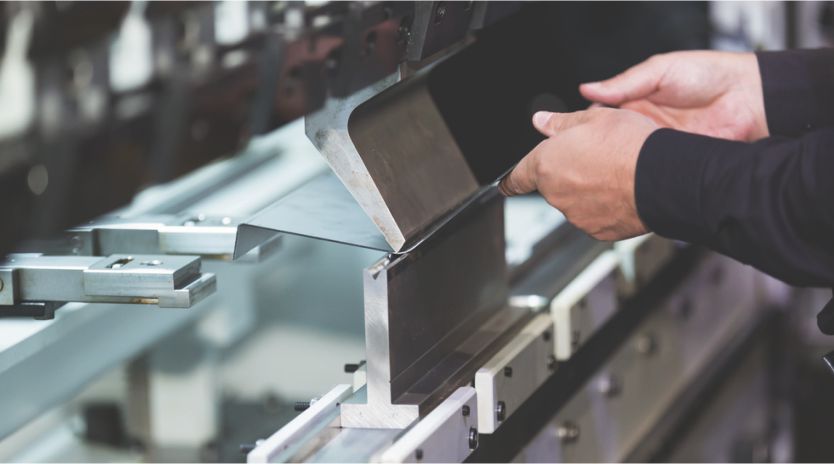Sheet Metal Forming: Innovation and Automation to enable improved manufacturing efficiency
By OEM Update Editorial May 2, 2022 8:47 pm IST
The advancements, innovation and use of automation in the Sheet Metal Forming industry has improved manufacturing efficiency, simulation accuracy and prevented a lot of losses and as the adoption of Industry 4.0 continues, this trend is all set to continue.
Sheet metal forming has become a crucial process in almost every production sector. Right from automobile and aviation to home appliances and food industry, sheet metal forming is a key element of the entire process. The subtractive process of sheet metal fabrication involves producing parts by cutting sheets of metal into shapes. In recent years, the demand for sheet metal parts with different shapes and properties has increased dramatically, due to the development of modern industries which in turn has led to innovations in metal forming technologies that have improved manufacturing efficiency and simulation accuracy.
So it’s no wonder that by 2026, the global market for sheet metal fabrication services is projected to grow at a CAGR of 2.6 percent to reach US$17.2 billion. The demand is also being furthered by the fact that every manufacturer is keen to improve the operational efficiency, especially among OEMs.
Elucidating on new thermal cutting technologies available in the market, Mr. Rakesh Agarwal, Managing Director, Laser Technologies Pvt. Ltd., says “When it comes to material thickness then thermal cutting can help in achieving a great degree of precision especially for structural steel or heavy fabrication. But in the future lasers will replace everything. A laser is the best tool for whenever and wherever necessary. It has its own advantages and benefits. Having said that, the industry needs to have multiple technologies at hand. And it is necessary to figure out what works best for the project or assignment in hand. We need to utilise technology wisely and to be able to do that a lot of awareness and education is required.
Voicing a similar opinion Mr. Uday Dixit, Managing Director of Carl Zeiss India (Bangalore) Pvt. Ltd., says that there should be a focus on education upon educating people on inspection technologies, spreading awareness about innovative technologies that are and can be available. A deep mind set needs to be carved that we are capable of doing it. The cost factor underlies every investment but in the long term this will reap the fruits of labour, be it growth or atmanirbharta.”
Potential for growth of advanced sheet metal
Automated inspectionsAutomated inspection technology includes robot guidance, automatic inspection, and 3D inspection and analysis platforms. A number of industries are looking towards this technology to improve production processes and product quality, including the food industry, plastics, automotive, manufacturing, and medical devices. Automated inspection reduces the uncertainty in any inspection process. Globally, all automotive manufacturers or aerospace manufacturers use inline automatic inspection systems to monitor quality and detect deviations and to identify characteristics, enabling manufacturers to drastically reduce startup times and specifically during product sampling. With this system, better process control is achieved, preventing a lot of losses by detecting defects early in production. Since the car body or two wheeler frame will always be there, the possibility for automated inspection will remain. And, this is likely to grow further because there is a rising demand for inspection of even a battery tray in the electric vehicle Mr. Uday Dixit, adds, “In battery electric vehicles, the battery tray consists of a very complex welded aluminium profile and they need to be checked to ensure proper cooling.”
Mr. Avinash Khare, Head of Pune Technology Centre, IMTMA is quick to add, “Quality inspection is also desired to keep up with the fast pace of highly automated production, the inspection is to be carried out without any stoppage in the production cycle. The increasing demands on flexibility and productivity also require that we adapt to the new changes in design taking into consideration the objectives of Industry 4.0 and the digital outputs that can now be made available to us. Moreover, as manufacturing processes become smarter and the legion of smart factories increases in number, adoption of the automated information system is a must.”
Industry 4.0
With Industry 4.0, the focus is on data automation. The more data you have, more credible the simulation. One can call it a better techno-astrology. The simulations are also a viable alternative to determine what will happen when certain parameters are altered. Then there is the provision for corrections which are of two types predictive and adaptive. Predictively you can analyse and do post mortem of data, so that for future projects, the same rejection will not repeat. It’s a predictive way of simulating and ensuring that the failure will not repeat itself.
The adaptive way on the other hand is focussed on implementing corrections while the process is still running. For certain measurements the industry expects adaptive corrections to be the norm. It’s a tall order, but that’s ultimately what the industry expects.
Cookie Consent
We use cookies to personalize your experience. By continuing to visit this website you agree to our Terms & Conditions, Privacy Policy and Cookie Policy.


















